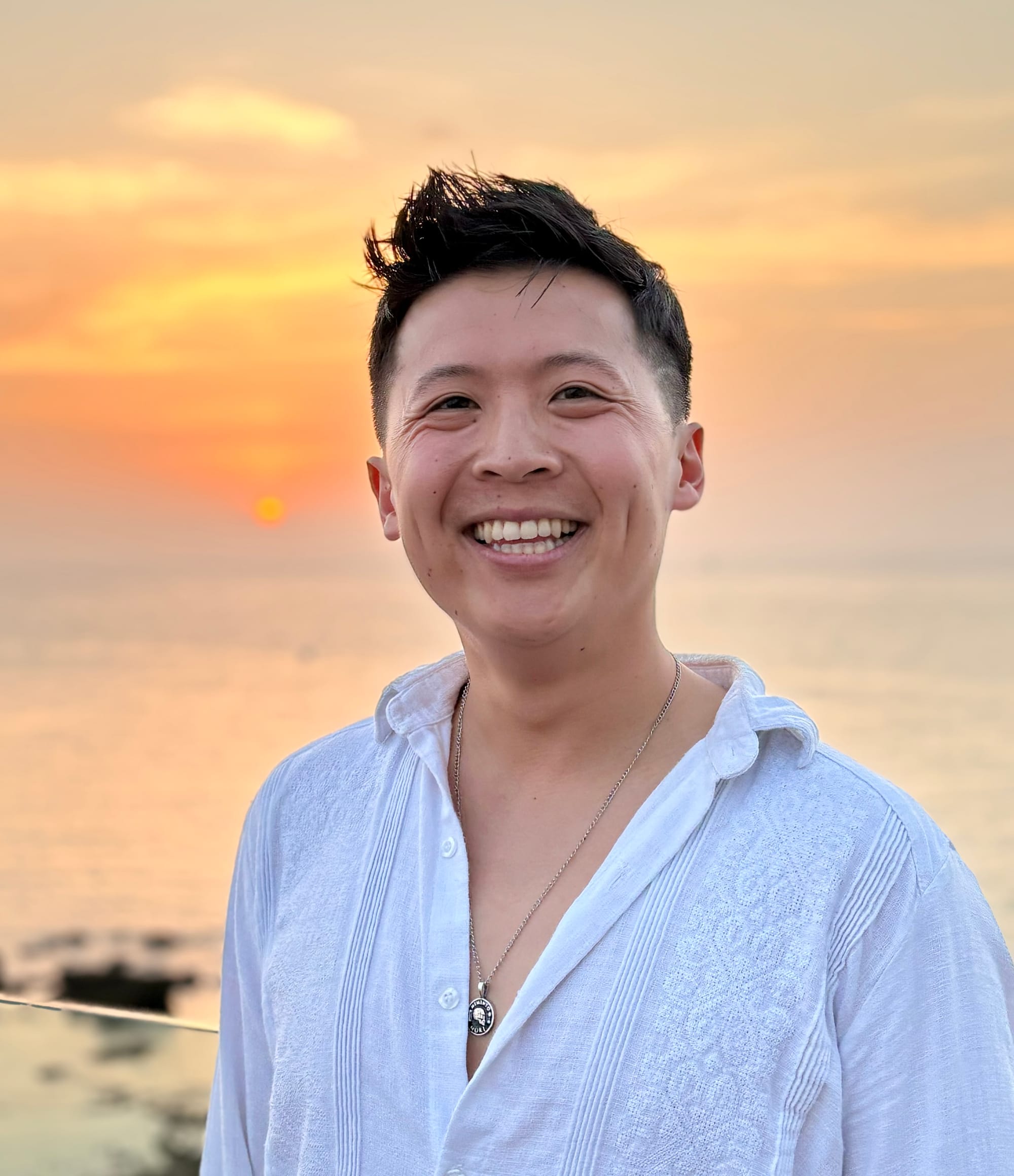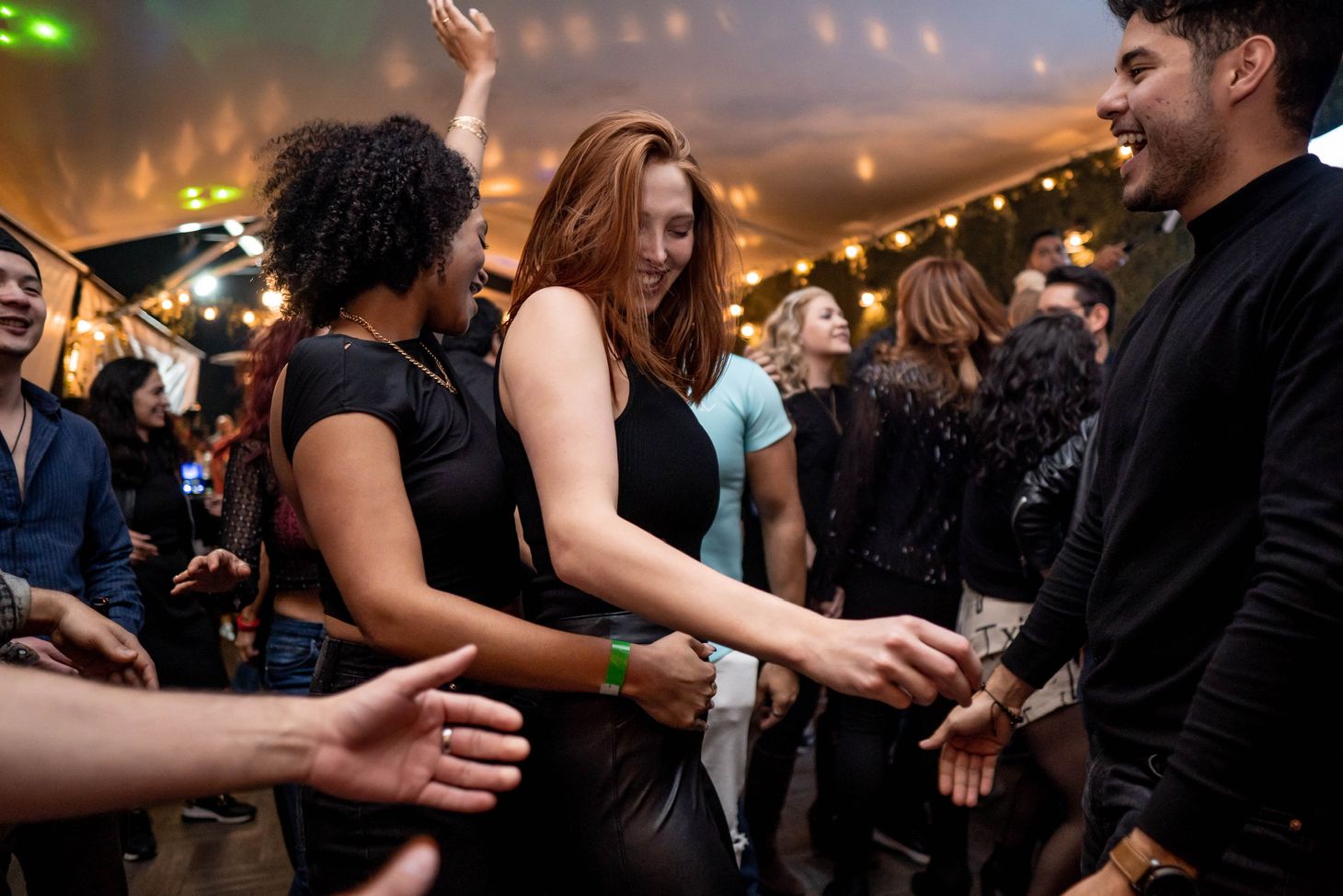My Journey On Learning Spanish In Six Months
How I went from zero to having full conversations in Spanish after six months using the learning strategies I've honed from becoming a chess expert.

Heyo! I'm Tam, the founder of Bachata Library. If you offered me a million dollars to define what hacer or tener meant in January 2022, I would have exactly zero dollars.
But fast forward six months later, I can have full conversations all in Spanish with Mexican locals. I got around Mexico for 10 weeks fairly comfortably and had an amazing time. I even went on a date fully in Spanish. 😲
I'll stop bragging now and admit that before this year, I've tried learning Spanish multiple times and have failed miserably.
- I took three years of Spanish in high school and learned nothing. I didn't even know how to say, "Dónde está el baño?"
- I downloaded Duolingo in 2016 to give Spanish another go. I got inspired by Tim Ferriss' learning method and bought books like Madrigal's Magic Key to Spanish. I quit after a week because it was too boring and difficult.
- I traveled to Mexico for the first time with my best friend. She didn't believe that I couldn't understand anything after three years of high school Spanish. Luckily she was fluent and led the way for everything we did.
So yeah... Spanish be hard yo.
The last thing I'll share is how much I hate the clickbait titles you see on YouTube: "How I Mastered Spanish in 10 Days."
Learning a new language (or mastering any skill) is a LOT of hard work.
For the majority of us, it takes months and years of consistent effort to get good at something. For things to finally "click."
So don't get discouraged when you see headlines like these. They are often exaggerated and typically written by people who have a surplus of time and resources.
I believe six months of daily practice is still ambitious, but a much more reasonable timeframe to get decent at anything.
I broke this post into three parts: what I did in the beginning, middle, and current. Let's dive in.
Hola amigos, want to learn to dance Bachata? It's the best way to meet locals in Latin American countries and also, partner dancing is so fun.
I just released an incredible training series to teach new dancers
1. EVERYTHING you need to get started dancing bachata, tonight
2. the most essential body movements you need for sensual bachata
3. how to effortlessly add more musicality and connection into your dance
4. my framework for mastering bachata, fast (aka don't make the same fatal mistakes that I did)
➡️ Watch the free training series here. ⬅️
What I did in the beginning
💪 Make learning Spanish a habit
When it comes to learning anything new, consistency is much more important than intensity.
Many language learning experts say bad things about apps like Duolingo but the one big thing that I love about the app is its gamification–it keeps you engaged and makes it feel like you're making progress.
Outside of Duolingo, I watched short Spanish tutorials on YouTube and completed quizzes on SpanishDict.
To be honest, I didn't do much in the beginning. And these activities may not be the most effective learning methods but at this stage, it doesn't matter.
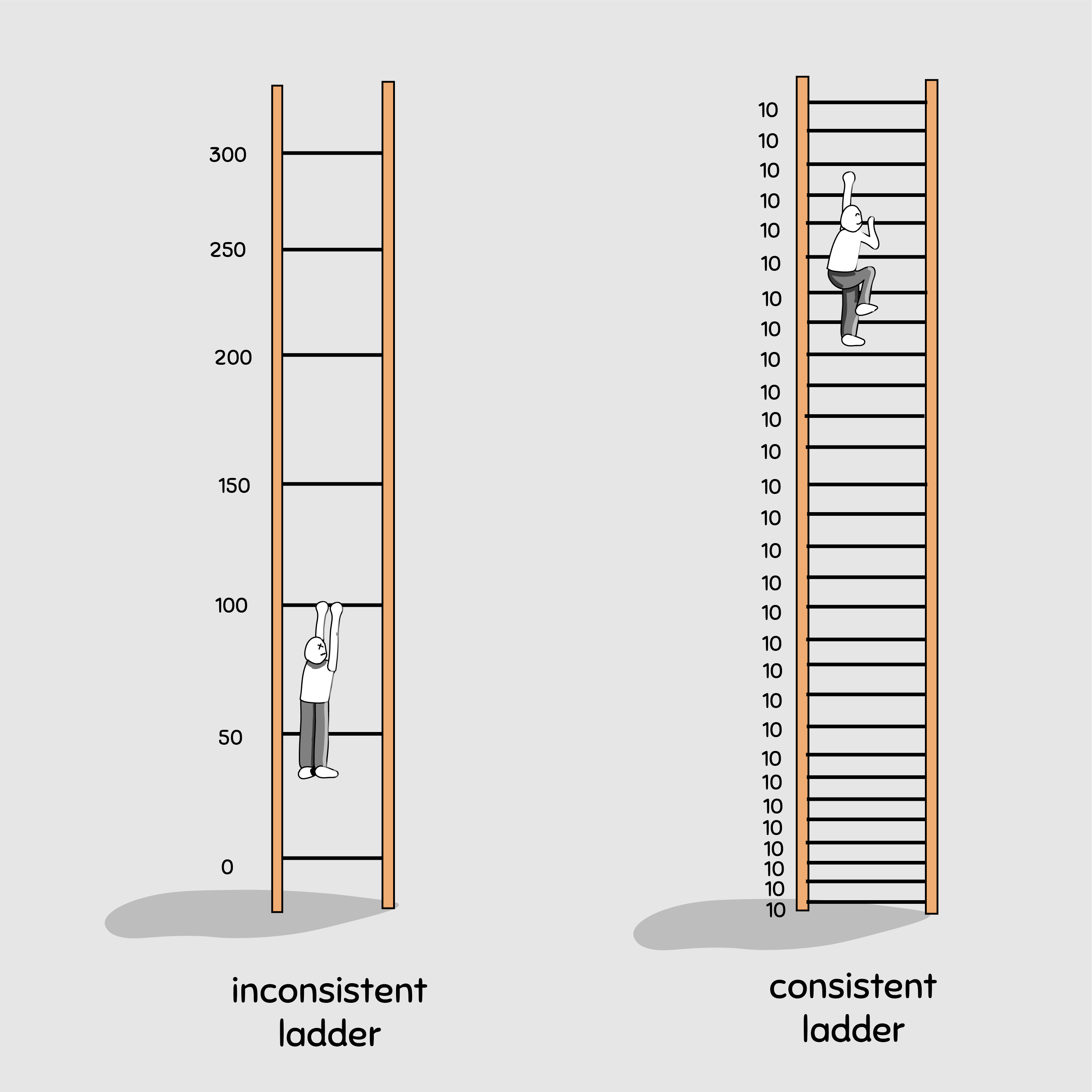
If a new person joins the gym, we should not teach them how to do deadlifts, even if that's one of the most effective exercises. It will be too complicated and stressful for someone who is overweight and has never lifted weights before.
We want that new person to come back the next day! Therefore we should offer them activities that feel easy, light, and fun. Only until they feel more confident is when we can extend harder activities for them to try.
It's all about focusing on the long game–a theme you'll see throughout this piece.
👁 Learn the most relevant concepts and ignore everything else
I hated learning Spanish in high school because it felt like none of it was relevant to everyday life.
I don't need to use regla (ruler) or derretirse (to melt) in a normal conversation. Yet Spanish teachers love to include these kinds of words in our vocab list and expect us to memorize (not understand) the meanings.
There's a famous concept called the 80/20 rule where 80% of your results derive from 20% of your actions. I use this rule to determine what 20% of Spanish would give me 80% of the results.
Luckily for us, there's a study that shows that knowing 1,000 of the most common Spanish words will give you 88% comprehension in a normal conversation.
While I'm skeptical about how high the % is, you get the idea.
Focus on studying what will be most useful to get the best bang for your buck. Ignore all the complicated vocab and concepts for now–you can always return to them later.
Start with the most common words first to build a solid foundation before going into more advanced vocabulary and topics.
I felt fortunate to find an amazing course from a teacher who I really liked. I found Nate on YouTube (10M+ views) and his course gave me a structured plan and made learning these foundational skills much more exciting than if I were to do it on my own.
Plus Nate is like, the most passionate teacher out there.
💖 Grow a love for the fundamentals
There are fundamentals in every game or sport that you need to master to get better.
With chess, I used to coach beginners who focused way too much time on memorizing openings and sneaky checkmate traps. What was more important was understanding opening principles, endgame theory, and middle-game strategy.
Fundamentals aren't always the most exciting or sexy things to practice. But without them, I would never have had a chance to compete at a higher level.
In Spanish, the fundamentals are things like conjugations, pronunciation, ser vs estar, basic verbs, and more.
Don't skip this to learn random vocabulary or to prioritize Mexican slang.
Sure, dabble in areas that interest you. But don't neglect what will really move the needle. Eat your vegetables!! 🥕
Grow a love to learn the important concepts in any skill because once you have the foundations, learning everything else becomes much more easier and fun.
👩🏫 Book private lessons with a teacher
I got decent at reading and writing from online resources. But I needed to practice listening and speaking.
If you're like me and don't have many close friends who speak Spanish, or you simply don't want to be a bother, I highly recommend finding a great teacher
Before I traveled to Mexico in April, I had 26 private lessons in total on both iTalki, a platform to connect local teachers to students around the world, and Live Lingua, a more professional hub of certified Spanish teachers started by a member of an entrepreneurial community I used to run in MMT Community.
A lesson on iTalki was $10 USD (or less) per hour while a lesson on Live Lengua was $20/hr. Even the high-end service is surprisingly not that bad of a price point.
The teachers obviously taught me Spanish but more importantly, they were my biggest cheerleaders throughout the learning process. 🙌
Whenever I messed up a sentence or forgot a word, they always smiled and told me to not worry about making mistakes.
I'm a pretty confident guy when it comes to looking stupid but I'll be honest, I needed that safe space to fail without judgment and a nice person to cheer me on. It really gave me the confidence to go out in the real world and mess up a little bit less.
You can get a free lesson ($10 credit / 10% off) if you sign up for iTalki / Live Lingua with my links. If you do, I get a free lesson as well, and more importantly, we can support amazing teachers from Spanish-speaking countries where USD goes much further to support their livelihoods. 🤗
👋 Go to language exchanges
Before my trip to Mexico, I was lucky to attend local language exchange events in Toronto.
I found the group on Meetup.com. The event is simply a bunch of people going to a bar and speaking in English/Spanish.
I barely knew how to have a conversation at the time. But it was a chance to get out of my comfort zone and try out a few new phrases I'd learned through my tutors.
Everyone I've met there was super kind and patient. They know how hard learning a new language is and are generally very supportive of helping.
Look for local groups in your areas. There are obviously events online but in my opinion, nothing beats having in-person conversations!
😁 Have fun
Having fun while learning is the BEST long-term strategy.
If things become too hard, you are more likely to quit and not go back. In the beginning, only do things that are easy and fun.
Once you build up the habit of learning every day and gain more competence, you will be more motivated and capable of doing harder activities.
Know what kind of learner you are. If watching videos and doing flashcards bore you to death, don't do it. If talking to people is fun for you... prioritize that.
I have a friend who shamelessly hires cute teachers on iTalki (more on this below) for private lessons because his goal is to speak Spanish on dates.
If you prefer learning with friends, find a group class to join or start your own amongst your friends and be like my favorite show, Community. 😉
Prioritize fun, especially in the beginning, and circle back to the harder things later once you feel more confident.
What I did in the middle
I quit my job and bought a ticket to Mexico in April 2022 (month 4 in my learning journey).
I was feeling burnt out and enduring endless bouts of fatigue and brain fog from long COVID. I simply needed to get away.
Plus this was an opportunity for me to practice my Spanish in real life and dance bachata/salsa again for the first time in ages. I'm glad I went because I never felt more alive! 🕺
🎒 I learned Spanish in a formal school setting
I spent three weeks at three different schools learning Spanish for 3-4 hours a day.
The school had other travelers like me who were eager to learn. While I don't recommend learning exclusively in a school, it helped strengthen the foundations that I had already built.
It cost around $130 USD for ~15 hours of small-group schooling which worked out to be less than $10/hr. Expensive if you go often but not terrible.
The schools weren't perfect–we had students of different levels in the same class, some teachers spoke no English which made translation difficult, and their material was VERY outdated and not relevant (similar to the textbooks you'd find in high schools).
Knowing what I know now, I am confident I would be able to make a more fun and effective curriculum for students at the A1 and A2 levels based on my experience creating content alone.
I'm reminded of a quote that I love from entrepreneur Kevin Kelly,
"It is the duty of a student to get everything out of a teacher, and the duty of a teacher to get everything out of a student."
While the curriculum wasn't ideal, I made the most out of my experience by asking questions I wanted to learn. I kept in touch with my fellow students and attended their free events outside of class.
I recommend new students try at least a week in a setting like this and get the most value they can from their teachers.
😃 Talk to EVERYONE you can
When I was in Mexico, I talked to literally every person I could.
Waiters, baristas, classmates, dance partners, street vendors, and Uber drivers.
I even stopped to talk to the non-profit workers who stood on the street to try to convince people to donate to Unicef and OXFAM. (I warned them in the beginning that I wasn't going to donate and they said it's fine, they were still down to chat with me. So I felt less guilty for wasting their time haha)
It didn't matter how much I didn't understand or how little I could speak.
Every conversation was a learning opportunity.
My favorite interaction was when two teenagers approached me sitting on a park bench in Mérida on my 3rd day in Mexico.
They randomly came over to say hi which sparked an hour-long conversation–the longest I've ever spoken to anyone in Spanish.
They brought their little 6-year sister over and I still remember her face when she didn't understand what I was saying. She would tilt her head slightly to the left and reply "Qué!?"
She spoke really fast and at times, I had no idea what she was saying. Normally I would just say "Sí" and pretend I understood. But I tilted my head to the left and replied back with a question inspired by her, "Qué!?"
I'd asked her to repeat herself, "Puedes repetirlo?" She didn't understand my question about not understanding her question. So she replied, "Qué?!" again.
Then there would be this awkward pause where we're both tilting our heads and no one knows what each other just said. 😂
This interaction felt so pure and sweet. I'm smiling just typing this.
We took a photo afterward together and another with their parents who friended me on Facebook afterward.
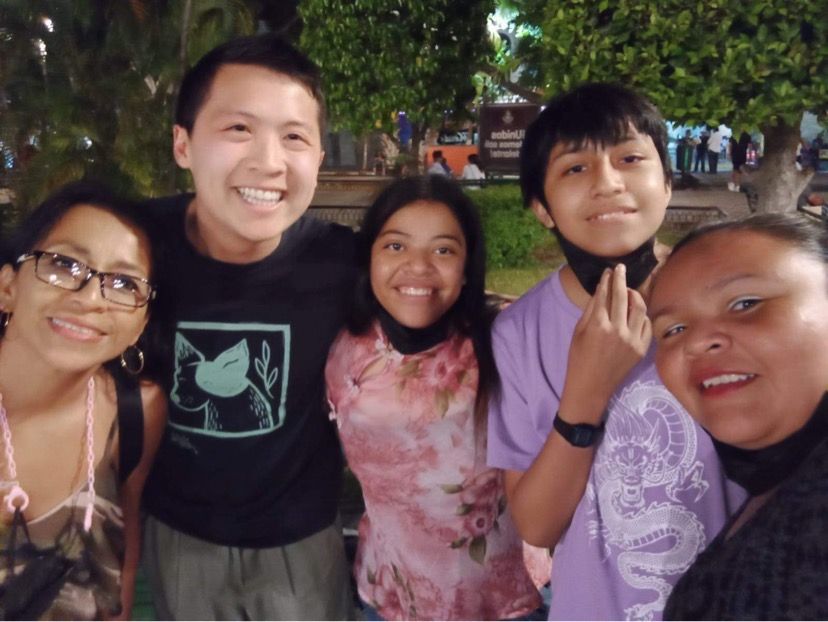
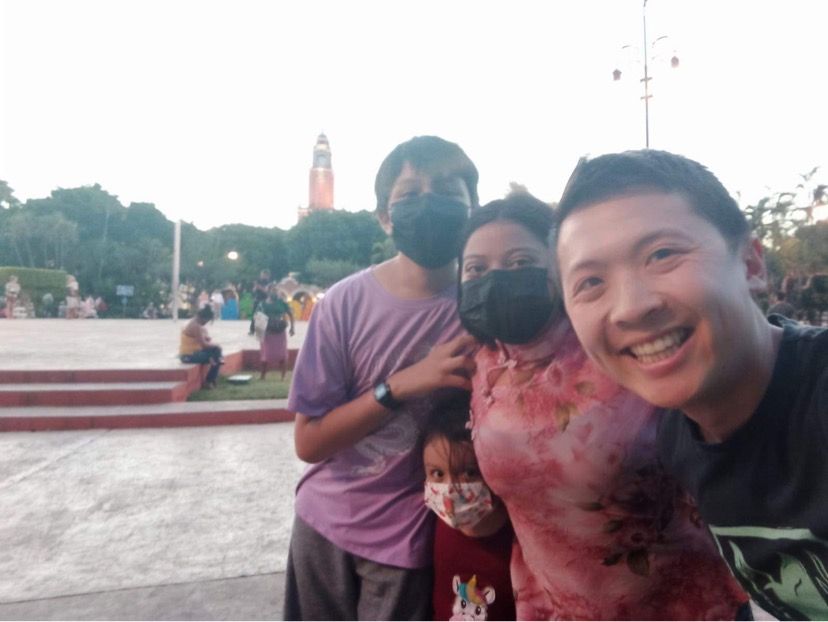
🤓 Do everything you can in Spanish
Even when I could have gotten by with English, I attempted to do and communicate everything in Spanish while I was in Mexico.
- Ordering coffee or tea
- Ordering at a restaurant
- Texting all my new friends
- Buying produce at the local market
- Going on dates with Spanish speakers
- Getting an eye exam and buying glasses
- Going to the dentist for a teeth cleaning
- Telling the barber what I wanted for my haircut
- Shopping and asking for different sizes or a cheaper price
- Taking dance classes where the teachers taught all in Spanish
The more unique experiences you have, the more your brain can form long-term memories and make connections to what you already know.
Go outside your comfort zone and be ready to look stupid. That's where the magic happens. ✨
🤠 Make friends who speak Spanish
I met so many wonderful people through dance and travel while I was in Mexico.
The majority of them speak fluent Spanish or are actively learning Spanish right now.
We'd see each other at the dance studio and have conversations before and after class. We'd follow each other on Instagram where I can read their stories/posts all in Spanish–more practice!
Once I made enough friends, I used my networking super powers to host my own language exchanges where I invited locals and expats together to practice English/Spanish.

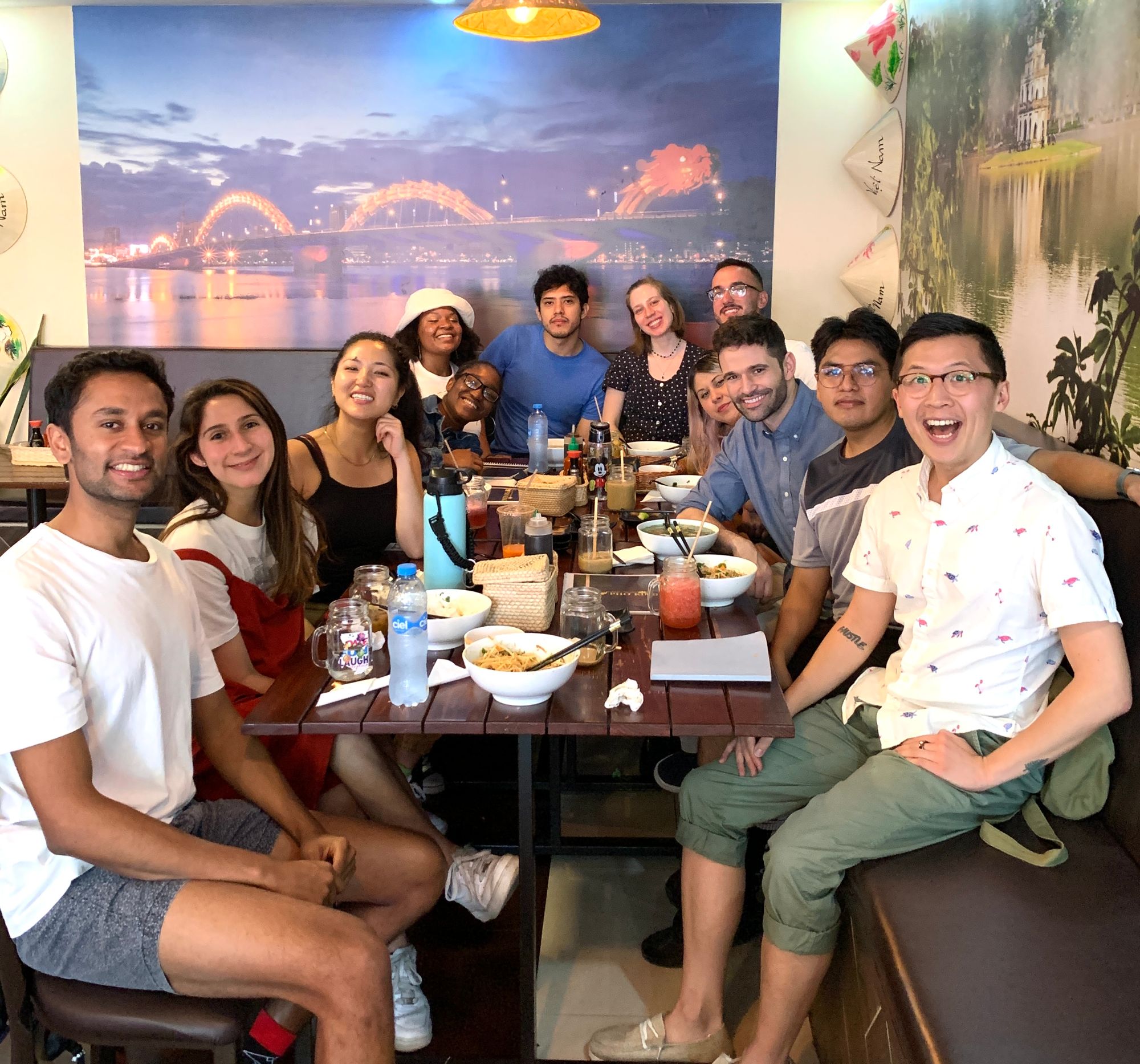
Each event lasted for 3 hours or so and my brain was fried after every gathering.
Good people, good food, good learning. What more can you ask for? 🤓
✏️ Learn through a variety of mediums
The people that complain about how Duolingo sucks and it doesn't make them fluent in Spanish are missing the point.
Duolingo, or any app, is simply one small part of ALL the other ways you are learning Spanish.
One app by itself won't do the job. But having it as part of your grand learning process is the key.
Here are all the other random things I did in Spanish:
- Wrote physical letters to a friend
- Wrote postcards from Mexico to family
- Listened to a lot of Spanish music
- Posted on Instagram (@tamphamdoesstuff)
- Teach students who are at the A1 level
- Read issues of Yucatan Today, an English/Spanish magazine for local news
- Watched the UFC cards while in Mexico
- Watched shows like Narcos and Money Heist
- Read children's books and social media posts
- Filled in a grammar and vocabulary workbook from McGraw Hill
Learning through many different mediums helps you form more connections and gives you more opportunities for deliberate practice.
Infuse Spanish into your everyday life wherever you can. Or simply travel to Mexico for a bit si puedes. 🇲🇽
Every activity is making me 1% better every day in areas where it's hard to quantify. I often don't appreciate or realize the gains until much later.
Trust in the process!
What I plan to do for the future
👍 Things I'm going to continue
- Talk with friends – I'm very happy I have more Spanish-speaking friends. I have a chance to deepen my relationships and sharpen my Spanish. Win-win 😁
- Drill my weaknesses – I still need a firmer grasp of the past tense. Specifically when to use fue or era and estaba vs estuve. I also use a bunch of words I've picked up without fully understanding their roots like haber or lo que or por vs para. Stuff like that.
- Take private lessons – I need to reach out to my tutors on iTalki and Live Lingua again. I stopped using them when I was in Mexico because I found local tutors and schools. But now that I'm back in the States, it's a perfect time for me to continue my studies.
🌵 New things that I'm adding to my plate
- Anki flashcards – I'm now at a point where I want to learn harder vocabulary for specific situations. Using these flashcards would help me get to the next level. I plan to add words that I have already said to friends or through texts into my flashcards so that I have a new word to study and prior context that makes it make more sense in my brain.
- Workbook - I am a visual learner. So I need to write things down and see how it's spelled, before moving on to listen and speak. I'm very surprised at how handy the workbooks from McGraw-Hill are. You can get the complete version on Amazon here: Practice Makes Perfect: Complete Spanish All-in-One, Premium Second Edition. I love physical books so writing in journals was a great fit for my learning style.
- Travel to Spain and then back to Mexico – I have a short trip to Spain planned in September that I am PUMPED about. Sometime in 2023, I would love to resume my long-term travel back to Mexico or another Spanish-speaking country like Colombia or Peru. Immersion is amazing once you have already some foundation in the language. Study up first before you make your trip. ✈️
My learning pace is slower now that I'm working again. My trip to Mexico was exactly what I needed to validate my learning efforts and inspire me to keep moving forward!
If you have any questions about any of this, tweet me or shoot me an email. Good luck with your Spanish journey. Disfruta tu viaje. ✌️
If you want a complete course to learn Spanish from zero, I highly recommend Nate's program. I found Nate on YouTube (10M+ views) and his course curated the most essential concepts and structured them in an easy-to-follow sustem.
I learned more Spanish one week than I did in one month trying to do it on my own. Plus Nate is like, the most passionate teacher out there. So check out his course. 🥳
Then get a free lesson ($10 credit / 10% off) if you sign up for iTalki / Live Lingua. Say hola to me on Instagram 😄
P.S. Special thank you to Jowy-Jhan for being a premium member and supporting this article. 🙏
Hola amigos, want to learn to dance Bachata? It's the best way to meet locals in Latin American countries and also, partner dancing is so fun.
I just released an incredible training series to teach new dancers
1. EVERYTHING you need to get started dancing bachata, tonight
2. the most essential body movements you need for sensual bachata
3. how to effortlessly add more musicality and connection into your dance
4. my framework for mastering bachata, fast (aka don't make the same fatal mistakes that I did)
➡️ Watch the free training series here. ⬅️
Tam Pham's Blog
I write about my adventures, learnings, and reflections on living my weird, unconventional life. Subscribe below!
